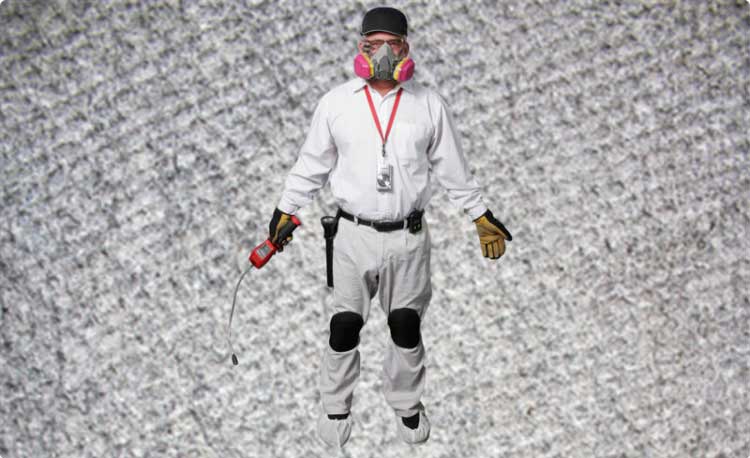
A comprehensive, controlled procedure of asbestos waste removal is always necessary when the deadly fibres are discovered.
In many cases, the process is relatively straightforward and completed in a short period of time.
The task of asbestos experienced removals is to determine the category of materials and level of an allowable and safe operation.
Account is taken of the type of materials and their condition to decide whether they can be safely removed or left securely in place and undisturbed.
If your property is more than 20 years old, it could contain hidden asbestos containing materials (ACMs). Why?
Because the use of white asbestos as insulation was only banned at the end of 1999.
It could also be used after this date by builders with stockpiles to clear.
An estimated half a million commercial properties and a million domestic properties still contain some form of ACMs according to the Health and Safety Executive (HSE).
Table of Contents
Asbestos Surveys Are Essential
Carrying out asbestos surveys prior to any serious property renovation is essential, but too often can be overlooked or simply ignored.
Unfortunately, exposure to the deadly fibres is not always thought of as a potential, high risk hazard.
The concern can be to clear the asbestos as fast and as cheaply as possible.
In reality, an asbestos survey cost is nominal and so too, the quantity to be removed.
Nevertheless, it is not always understood that different asbestos materials need to be treated in different ways.
Each require close, detailed inspection, often including sample analysis.
It’s simply not the case that white ’chrysotile’ asbestos is ‘low risk’ because it was allowed to be used for 15 years after blue and brown asbestos was banned in the mid 1980s.
A view taken because medical reports at the time observed that the ‘curly’ chrysotile fibres could be more easily dealt with by the immune system.
Surveys Evaluate Condition, Wear & Tear
The first evaluation is the condition of the asbestos.
More friable (fragile and disintegrating) soft materials will easily crumble and release their fibres when handled.
This would still apply to sturdier AIB (asbestos insulation board) when attempts to remove may cause damage to corners and edges, and if cracked, pieces fall away.
Even if the materials are not categorised as friable the next important consideration is an assessment of wear and tear.
Apart from the possibility of historical flood or fire damage, any renovations involving plaster skims, wallpaper or paint coatings may leave their mark. Why?
The potential for adhesive or paint chemicals to slightly leech into the AIB surface and break down fibres.
Another potential issue is the possibility that nails, screws or other fixings have come into contact with the material surface during DIY, causing fractures and release of airborne fibre particles when exposed.
When Asbestos Encapsulation is the Most Likely Action
An asbestos material coated, covered or contained within another material, such as cement, paint or plastic are considered to be firmly “bonded in a matrix”, the most common example being floor tiles.
Hard bonded asbestos is generally resistant to wear and tear, and the fibres remain protected for a longer period of time.
However, even hard-bonded asbestos materials are liable to become friable if they are damaged or simply fractured.
In all of the above examples, an expert, experienced decision will need to be taken as to whether further damage would be caused if an asbestos removal is attempted.
Generally, if asbestos is found to be undisturbed and in good condition the most likely action will be to leave in place, firmly encapsulated to prevent any possibility of fibre damage and release.
Professional asbestos experienced surveys are key to ensuring a safe and properly controlled operation throughout where the focus is on exposure risk prevention.